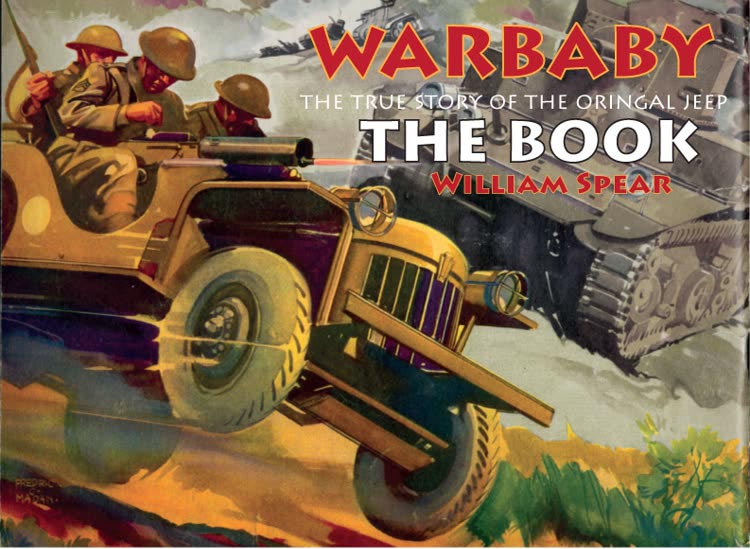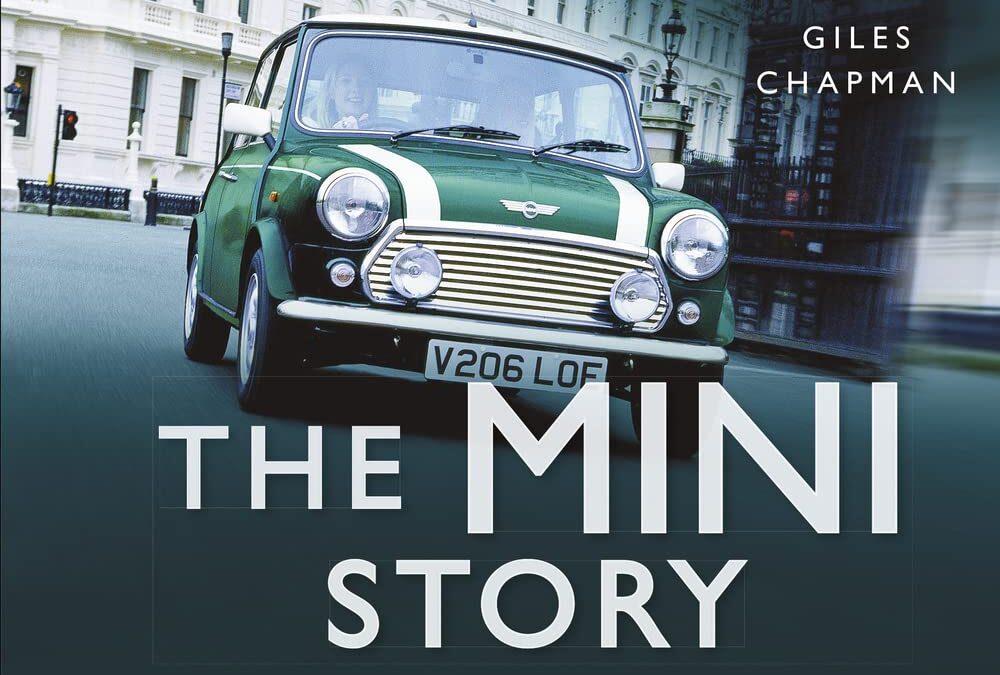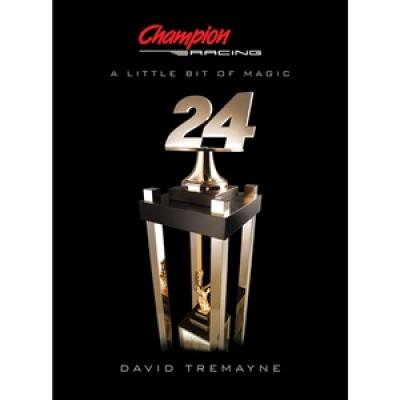
The True Story of the Original Jeep
On September 21, 1940 in Butler, Pennsylvania an awkward looking miniature truck emerged from the toolroom of the American Bantam Car Company.
Stunning even its creators with its performance it was delivered for Army testing two days later, where it was recognized immediately as a tactics changing weapon of enormous significance and was dubbed a “jeep” by its testers. It went on to become one of the most decisive weapons of WWII, and the Army was not to be without one for decades to come. Displayed in some of the world’s most famous art museums the jeep is considered one of the most elegant American industrial designs of the 20th century and some regard it as the the most significant and influential automobile in American history.
Despite all this, in the 76 intervening years which have been filled with thousands of books and articles, internet sites, and films extolling the virtues of the jeep, the complete story of the jeep’s origins have remained largely a mystery, shrouded by fragmentary, conflicting and incomplete evidence, conjecture, supposition or outright guessing.
At long last in William Spear’s definitive new book WARBABY is set out the true story of how the jeep came to be.
The history is not only revealed in full, but emerges as one of the most interesting and exciting stories in automotive history, from beginning to end filled with dozens of compelling characters in dramatic, high risk situations.
Whether your interest is in industrial design, history, politics, biography, research, simple curiosity about the cars themselves or just interest in an old fashioned good story, WARBABY covers the territory.

In the modern era, mass-produced motorcycles tend to be of Japanese or Italian origin with the ‘big four’ Asian manufacturers dominating the market. However, it wasn’t always the case. Until the 1950s, even into the 60s, British makers such as Scott, Rudge, BSA, Norton and Vincent ruled the roost. These legendary companies sold their bikes around the world, winning racing championships and setting speed records as they went. They, and many smaller British firms like them, are motorcycling’s founding companies. This is the story of those pioneering firms, whose engineers – many self-taught – were fired by racing ambition, commercial rivalry, patriotic duty, and above all, a passion for innovation. Superbly illustrated with over 150 color pictures many previously unpublished Classic British Motorcycles is a captivating and highly informative account of the men, machines, race meetings and world events that shaped the development of the motorcycle from its bicycle origins.

In this, the first Haynes Manual about a Second World War warship, acclaimed maritime author and historian Angus Konstam gives readers a detailed insight into the design, fighting capability and short-lived career of Nazi Germany’s greatest warship. He tells the Bismarck’s story, from her origins in the aftermath of the Great War and the Versailles Treaty, including Germany’s capital ship building program, her design, building, launch and fitting out, to her sea trials and eventual commissioning into the Kriegsmarine.

Introduction by Karl Ludvigsen. The pedigree of Porsche as car designers was brilliantly affirmed by its creation of the 550 Spyder competition roadster. See the 550 Spyder in all its variations, from its origins in experimental Porsche models to the amazing and finely crafted one-off specials of Walter Glockler. With its superb four-cam flat-four engine designed by Ernst Fuhrmann, the 550 became known as a giant-killer for its racing successes on tracks all over the world.
As tough as it was handsome, the 550 was winning races years after its official launch at the Paris Salon in 1953. Exclusive photography of the 550 in the Ludvigsen Library shows its engineering, its evolution and in action in races in Europe and North America. This book is must reading for all Porsche enthusiasts.

“In the forty year period between 1951 and 1991, Canadian sports car competition underwent a massive change, transforming itself from an amateur recreational pastime to a commercialized profession and from an individual sport to a spectacle for mass consumption. The Chequered Past is the story of the struggle over power and purpose within Canadian auto sport that led to this transformation.
The first comprehensive history of sports car racing and rallying in Canada, The Chequered Past traces the efforts of the national governing body – the Canadian Auto Sport Clubs (CASC) – to bring Canadian sports car competition up to a ‘world class’ level, and to manage the consequences of those efforts in the second half of the twentieth century. David Charters traces the social origins of the sport in post-war Canada and the major trends that shaped it thereafter: professionalism, technological change, rising costs, and the influence of commercial sponsors. Charters argues that while early enthusiasts set the sport on a course toward professionalism that would eventually produce world class Canadian events and racers, that course would also ultimately change the purpose of the sport: from personal recreation to mass entertainment. As technological innovations drove up the costs of competing at the top ranks, racers were forced to rely on sponsors, who commercialized and ultimately gained control of the sport. The end result, Charters argues, was the marginalization of the amateur competitor and of the CASC itself.
Based on extensive research into the CASC’s records and dozens of interviews with former competitors and officials, The Chequered Past opens a window into the rich but virtually unknown history of auto sport in Canada, and claims for it a place in Canadian sports history.”

“Today’s NASCAR is a family sport with 75 million loyal fans, growing bigger and more mainstream by the day. Part Disney, part Vegas, part Barnum& Bailey, NASCAR is also a multi-billion dollar business and a cultural phenomenon that transcends geography, class, and gender. But dark secrets lurk in NASCAR’s past.
Driving with the Devil uncovers for the first time the true story behind NASCAR’s distant, moonshine-fueled origins and paints a rich portrait of the colorful men who created it. Long before the sport of stock-car racing even existed, young men in the rural, Depression-wracked South had figured out that cars and speed were tickets to a better life. With few options beyond the farm or factory, the best chance of escape was running moonshine. Bootlegging offered speed, adventure and wads of cash – if they survived. Driving with the Devil is the story of bootleggers whose empires grew during Prohibition and continued to thrive well after Repeal, and of drivers who thundered down dusty back roads with a car full of corn liquor, deftly out-running federal revenuers. The vehicle of choice was the Ford V-8, the hottest car of the 1930s, and ace mechanics tinkered with them until they could fly across mountain roads at 100 miles an hour.
After fighting in World War II, moonshiners transferred their skills to the rough, red-dirt race tracks of Dixie, and a national sport was born. In this dynamic era (1930s and 40s), three men with a passion for Ford V-8s – convicted felon Raymond Parks, foul-mouthed mechanic Red Vogt, and crippled war vet Red Byron, NASCAR’s first champion – emerged as the first stock car “”team.”” Theirs is the violent, poignant story of how moonshine and fast cars merged to create a new sport for the South to call its own.
Driving with the Devil is a fascinating look at the well-hidden historical connection between whiskey running and stock-car racing. NASCAR histories will tell you who led every lap of every race since the first official race was held in 1948. Driving with the Devil goes deeper to bring you the excitement, passions, crime, and death-defying feats of the wild, early days that NASCAR has carefully hidden from public view. In the tradition of Laura Hillenbrand’s Seabiscuit, this tale not only reveals a by-gone era of a beloved sport, but also the character of the country at a moment in time.”

This book focuses on the role of Glenn H. Curtiss in the origins of aviation in the United States Navy. A self-taught mechanic and inventor, Curtiss was a key figure in the development of the airplane during the early part of the century. His contributions are generally well known, among them a control system using the aileron instead of the Wrights’ wing-warping, the first successful hydro-airplane and flying boat, among other developments. Curtiss’s links to the Navy came as result of advocates of aviation in the Navy, chief among them Captain Washington I. Chambers, who recognized that the navy had special requirements for airplanes and their operations, and for aviators and their training. In a partnership with the navy, Curtiss helped meet the special requirements of the service for aircraft, particularly those with the potential for operating with naval vessels at sea or in conducting long-distance flights over water. He also was instrumental in training the first naval aviators. Curtiss and the navy continued their collaboration through World War I, reaching a climax in 1919 with the first transatlantic flight by the famed Navy-Curtiss NC flying boats. The book addresses the broader implications of the Curtiss-Navy collaboration in the context of the long-standing trend of government-private cooperation in the introduction and development of new technologies. It also explores the interactive dynamics of weapons procurement and technological change within a large and entrenched bureaucracy and helps lay to rest the persistent myth that the navy resisted the introduction of aviation. The pioneering work of Curtiss and his close ties with Chambers and others helped the navy to define the role of aviation in the years up to and through World War I. The book will relies heavily on primary source materials from a variety of archival collections, including the Library of Congress, National Archives, National Air and Space Museum, and the Glenn H. Curtiss Museum.

SOLD OUT
Written by Malcolm Bobbitt – whose companion Volkswagen titles cover the Karmann Ghia coupé and convertible, and possibly the greatest classic of all time, the VW Bus – this new edition of the Volkswagen Beetle Cabriolet chronicles the history of this practical and sought-after classic. The author traces the Beetle Cabrio’s ancestry and development from its pre-war origins through to 1980, by which time more than 330,000 models had been built, and up to the present day when in excess of 228,000 New Beetle cabriolets have been sold worldwide. As the car’s engineering quality has ensured a very high survival rate, this book is also a guide to Beetle Cabrio ownership, providing buying advice, specifications, and information on customizing.

A unique look at the development of the Mini—the tiny car that was voted the second most influential car of the century .
The latest in the highly illustrative Story series offers the fun and fascinating complete story of the Mini, from its 1950s origins to its enduring appeal. This light-hearted romp through the world of Minis explores the history and development of the car, as well as offering juicy snippets and fascinating quotes, perfect for anyone who loves this iconic vehicle.

The Luftwaffe’s Influence on Modern Aircraft Design
Did Germany lose the war but win the space race?
Innovative aircraft designs that came off German drawing boards during World War II may not have helped the Third Reich last a thousand years, but the designs may just influence aircraft design for that long.
Innovations that include things such as swept wings, delta wings, T-tails, VTOL, as well as jet and rocket engines all find their origins on German drawing boards. Post war aircraft such as the MIG-15,and North American F-86 Sabre as well as the Concorde, Lockheed B-2, the Space Shuttle, and even modern sailplanes all owe elements of their design to WWII German engineers and designers.
This book examines those wartime German contributions and puts them into the broader context of post war aircraft designs that were created by aerospace engineers in Europe, the Soviet Union and North and South America.
Hardbound, profusely illustrated

THE Indianapolis “500” is much more than merely the best known automobile race in the world. It is a cherished time-honored institution with a glorious history dating back more than one hundred years.
Known to most as, quite simply, “The 500,” it has been held every year since 1911, the only exceptions being 1917-18 and 1942-45, during the periods when America was involved in the two world wars.
Steeped in tradition, it has meant many things to many people and has played an enormous role in the lives of human beings, perhaps even more so for the spectators and devotees than for the participants themselves.
For over half a century, Memorial Day meant either trekking to the track or else ensuring that whatever other activity was planned for the day, a radio would always be within earshot. In more recent decades, settling down in front of the television has been added to the equation, while it is now the Sunday of Memorial Day weekend on which the extravaganza takes place, rather than on Memorial Day itself. But the feeling is the same.
For the participants, it has been a nearly 100-year saga of dreams, innovation, ingenuity, bravery, triumph, and tragedy. Paupers became millionaires, young men from small towns and broken homes became international celebrities, and regrettably, some of them gave their lives.
The “500” has endured world wars, depressions, recessions, political strife, and negative journalism, and yet it continues to draw massive passionate and emotional crowds, whose loyalty is rewarded with never-to-be-forgotten moments such as the finishes of 2006 and 2011, when Dan Wheldon snatched victory on literally the final turn.
This, then, is the story of the Indianapolis 500 and how it came to be. This is the story of more than 100 editions of the race, interspersed with a look at some of the compelling personalities, some little-known facts, an attempt to document the origins of some of the traditions, and perhaps even to dispel a few myths.
From Harroun to Franchitti, it’s all here…

With the launch of the new California 1400 in 2013, and appointment of actor Ewan McGregor as brand ambassador, Moto Guzzi’s owners Piaggio are proving their faith in the future and importance of Moto Guzzi. Moto Guzzi – The Complete Story charts the development of the stylish Guzzi bikes and the highs (and lows) of one of the oldest motorcycles marques still in existence. Topics covered include the origins of the Moto Guzzi factory at Madello del Lario – the oldest motorcycle factory in the world; the success at the Isle of man TT and races worldwide; the development of the V-twin engine; the De Tomaso years and the introduction of the iconic Le Mans model.















